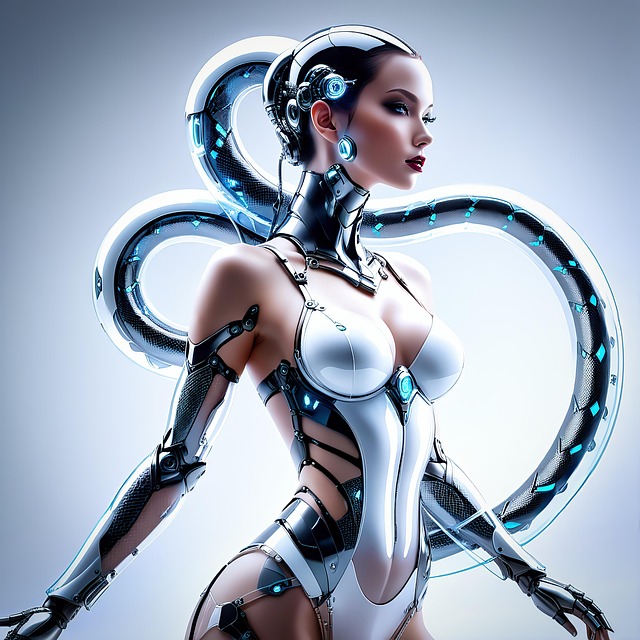# Navigating the AI Landscape: Trends and Innovations Shaping Our Future Today
Artificial Intelligence (AI) is rapidly transforming various industries, and one of the most significant sectors experiencing this revolution is the automotive industry. From smart manufacturing to autonomous vehicles, AI is not just a buzzword; it is reshaping how cars are designed, built, and experienced. In this article, we explore key areas where AI is making a substantial impact, featuring real-world examples from leading companies like Tesla, BMW, and Toyota.
## Smart Manufacturing: Revolutionizing Production Processes
The automotive industry has long relied on efficient manufacturing processes, and AI is enhancing these systems in unprecedented ways. Smart manufacturing uses AI algorithms and machine learning to optimize production lines, reduce waste, and improve quality control.
### Key Innovations in Smart Manufacturing:
– **Predictive Analytics**: AI can analyze data from machinery to predict failures before they occur, minimizing downtime and maintenance costs.
– **Quality Control**: Machine vision technology powered by AI can identify defects in real-time, ensuring that only high-quality vehicles leave the assembly line.
**Example**: BMW has integrated AI-driven systems in its production facilities, allowing for real-time monitoring and adjustments. This innovation not only increases efficiency but also enhances product quality, contributing to BMW’s reputation for excellence.
## Predictive Maintenance in Vehicles: Enhancing Reliability
Predictive maintenance is another area where AI is making waves in the automotive sector. By leveraging data from various sensors embedded in vehicles, AI can predict when a component is likely to fail, allowing for timely maintenance and reducing the risk of breakdowns.
### Benefits of Predictive Maintenance:
– **Cost Savings**: By addressing issues before they escalate, companies can save on repair costs and extend the lifespan of vehicle components.
– **Improved Safety**: Ensuring that vehicles are in optimal condition enhances safety for drivers and passengers alike.
**Example**: Toyota has implemented predictive maintenance systems in its vehicles, utilizing AI to analyze driving patterns and vehicle performance. This proactive approach not only enhances the ownership experience but also promotes safety on the roads.
## Autonomous Driving Innovations: The Future of Mobility
One of the most talked-about applications of AI in the automotive industry is autonomous driving. Companies are investing heavily in AI technologies to develop self-driving cars that can navigate complex environments without human intervention.
### Features of Autonomous Driving:
– **Machine Learning Algorithms**: These algorithms enable vehicles to learn from their surroundings and make decisions based on real-time data.
– **Sensor Fusion**: Combining data from cameras, radar, and LIDAR allows autonomous vehicles to perceive their environment accurately.
**Example**: Tesla is at the forefront of autonomous driving innovations, with its Full Self-Driving (FSD) software continually improving through over-the-air updates. By collecting data from its fleet of vehicles, Tesla enhances its AI models, bringing us closer to fully autonomous driving.
## Supply Chain Optimization: Streamlining Operations
AI is also transforming supply chain management in the automotive industry. By analyzing vast amounts of data, AI can identify inefficiencies, predict demand, and optimize inventory levels.
### Advantages of AI in Supply Chain:
– **Demand Forecasting**: AI algorithms can analyze market trends and consumer behavior to predict demand more accurately.
– **Inventory Management**: Real-time data allows companies to maintain optimal stock levels, reducing excess inventory and associated costs.
**Example**: Ford has adopted AI-driven supply chain solutions to streamline its operations. By using predictive analytics, Ford can anticipate demand fluctuations and adjust production schedules accordingly, minimizing delays and ensuring timely delivery of vehicles.
## Intelligent User Experiences: Enhancing Driver Interaction
The integration of AI in vehicles goes beyond manufacturing and maintenance; it also enhances user experiences. Smart car technology is designed to make driving safer, more enjoyable, and more efficient.
### Features of Intelligent User Experiences:
– **Voice Recognition**: AI-powered voice assistants allow drivers to control navigation, music, and other functions hands-free.
– **Personalized Settings**: AI can learn driver preferences and automatically adjust seat positions, climate control, and infotainment options.
**Example**: Mercedes-Benz has incorporated AI into its MBUX infotainment system, which offers voice-activated controls and personalized recommendations. This technology not only enhances convenience but also ensures that drivers remain focused on the road.
## Conclusion: The Future of AI in the Automotive Industry
As we navigate the ever-evolving landscape of AI in the automotive industry, it is clear that the future holds immense potential. From smart manufacturing to autonomous vehicles, AI is set to redefine how we interact with cars and transportation as a whole.
### Future Trends to Watch:
– **Increased Collaboration**: Automakers will likely collaborate with tech companies to accelerate AI advancements.
– **Regulatory Developments**: As autonomous driving becomes more prevalent, regulatory frameworks will evolve to ensure safety and compliance.
– **Sustainability**: AI will play a crucial role in developing more sustainable manufacturing processes and electric vehicle technologies.
In summary, the integration of AI in the automotive industry is not just a trend; it is a fundamental shift that will shape the future of mobility. With companies like Tesla, BMW, and Toyota leading the charge, we can expect to see continued innovations that enhance safety, efficiency, and user experiences in the years to come.











